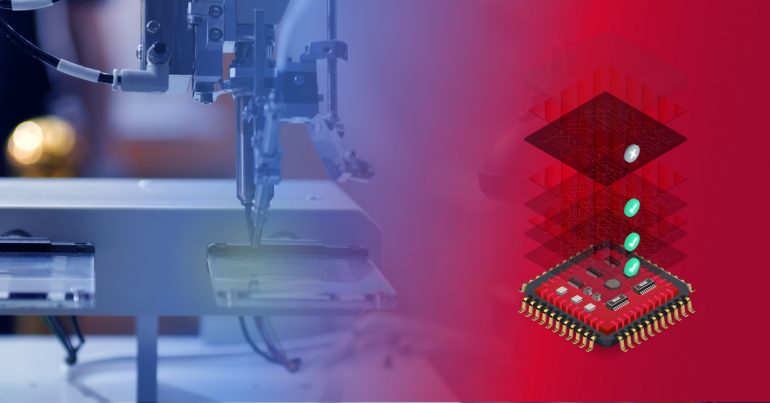Automation on Production Lines: Enhancing Product Quality with Anomaly Detection

Organizations across all industries are ramping up their digital transformations to adapt to the pandemic, compete with competitors, and improve the quality of their output.
Within the manufacturing industry, this has never been more important. Such dramatic shifts in digital transformation across this industry has meant that automated anomaly detection and data analysis across production lines is essential to keep up with competitors.
From retail production to complex machinery, manufacturers need to ensure accuracy across all their production lines and detect faulty productions as quickly as possible.
Can A.I. enabled process automation revolutionize the anomaly detection process and transform the way manufacturers operate? Let’s find out.
When Automation Meets Manufacturing
Manufacturers often use industrial systems that gather data from different sensors, and this data can vary drastically, taking into account different levels of noise, frequency of production, various frequencies of measurement etc. These variations can make data difficult to work with, which is why a high level of accuracy is required.
Using A.I. image recognition, manufacturers can drastically improve quality control with a highly predictable level of accuracy. We worked with a computer microchip manufacturer to create an anomaly detection solution that used these technologies to identify and remove cracks and anomalies in their materials, without disrupting the manufacturing process.
By using existing and synthetic data and images, we trained our solution to accurately classify these materials as “GOOD” or “CRACKED” and appropriately instruct the manufacturing line to continue or remove materials.
As a result, 0% of faulty materials were mislabeled as good, ensuring that the manufacturer could continue to maintain high quality standards for their outputs.
Beyond Manufacturing
While A.I. and automation are invaluable resources for the manufacturing industry, it doesn’t stop there. Across many industries, automated anomaly detection is ensuring that businesses can maintain similarly high levels of quality control.
In the financial sector, this technology can be used for fraud detection by learning from real and synthetic data examples of suspicious activity. When carried out in real time, this technology can prevent fraud before it happens and banks can ensure that their customers’ accounts (and their own reputations) remain safeguarded.
In healthcare, this advanced A.I. technology can be used to review medical images and detect anomalies that can lead to faster diagnosis and subsequently speed up treatment. An example of this is the A.I. enabled process automation software approved by the FDA that takes an image of a patients’ eyes and automatically detects the presence of the retinal disease diabetic retinopathy, and refers them to an eye specialist if detected.

Harnessing the power of A.I. powered anomaly detection is allowing manufacturers to heighten the quality of their output while saving time and money. Ultimately, it is allowing those in the manufacturing industry (and beyond) to improve their level of service and stay competitive.
Discover how we helped our customer in the manufacturing sector achieve a false negative error rate of 0% across their production lines:

Get the latest roundup of the most important, interesting and stories from the past week. In your inbox every Saturday by 10am.
Related Articles you might like
The House Task Force road map that will transform businesses with responsible AI
On Tuesday, the Artificial Intelligence House Task Force released a substantial 253-page report outlining the principles for ethical and responsible […]
View Blog PostRecognized as a member of the Forbes Technology Council
We are proud to announce that Intelygenz President, Chris Brown is now a member of Forbes Technology Council. A vetted […]
View Blog PostKey Strategies for Financial Institutions to Unlock AI Value
In the financial services sector, artificial intelligence (AI) is often heralded as a transformative force capable of revolutionizing everything from […]
View Blog Post

